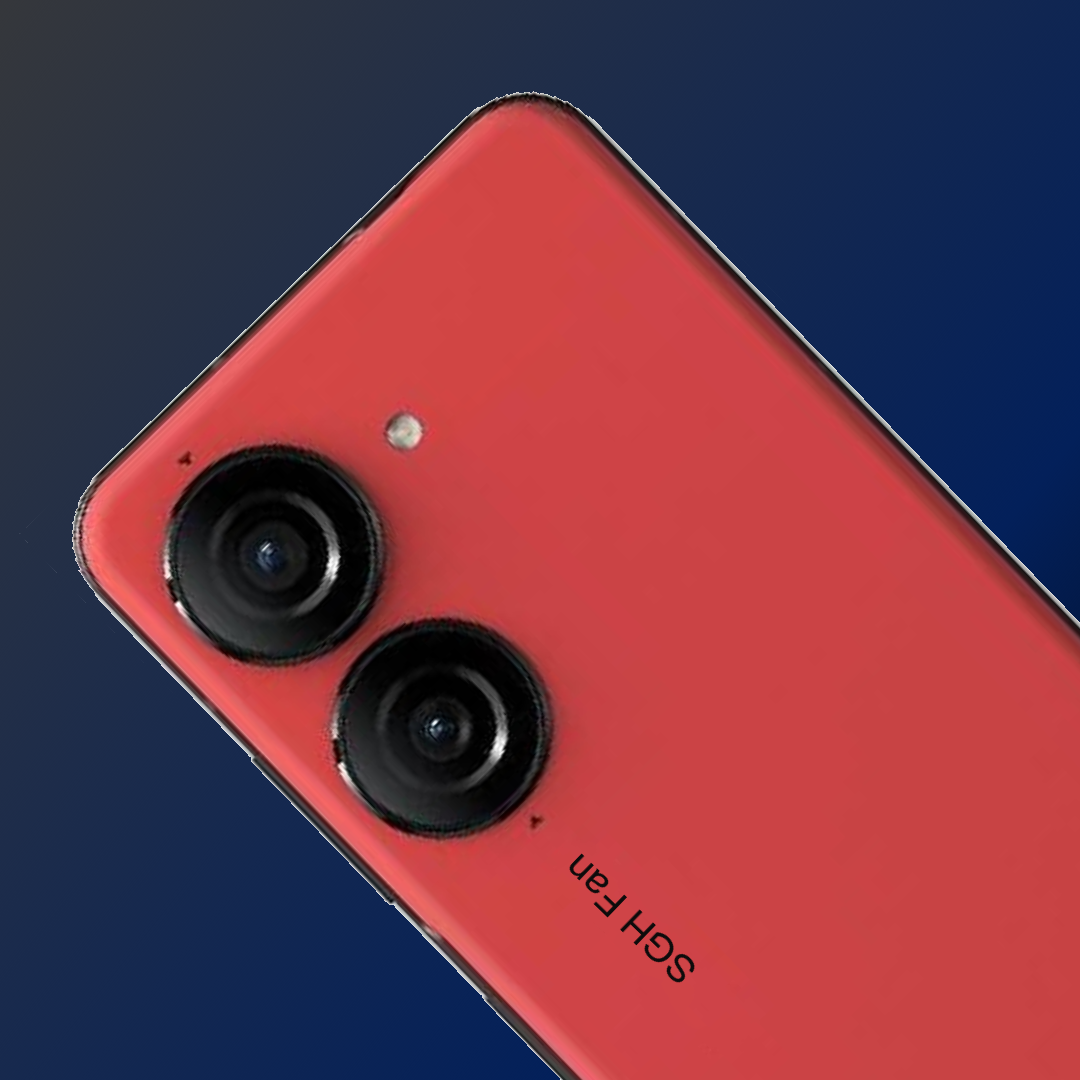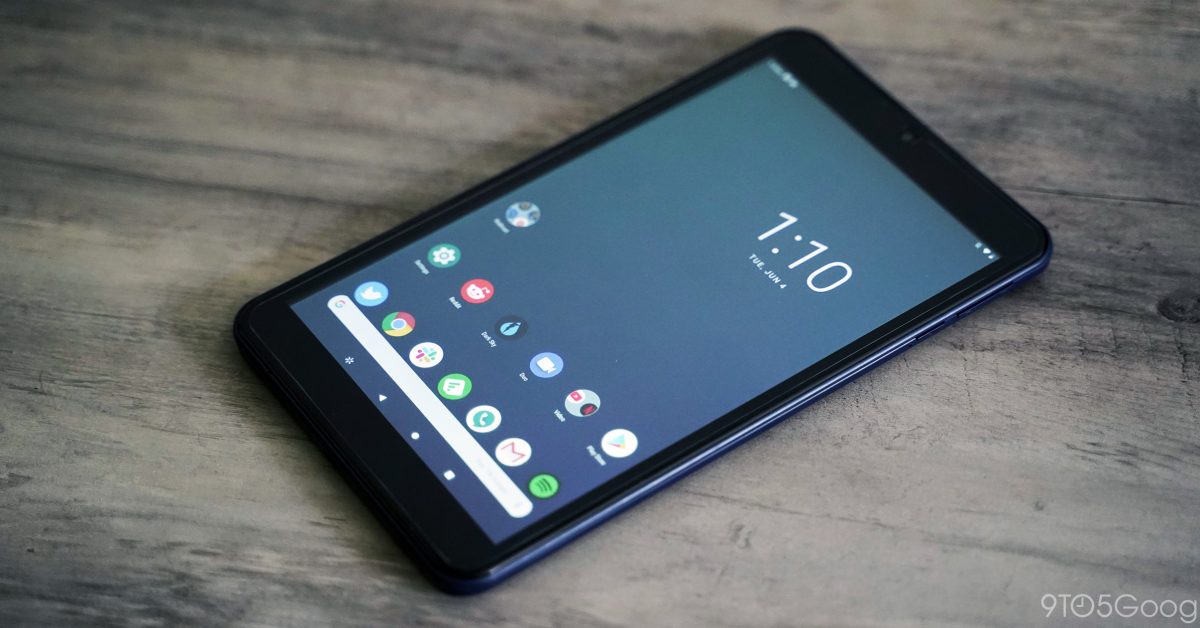- SSUPII ( @SSUPII@sopuli.xyz ) English61•1 year ago
It’s not only with Black Friday. The Android tablets market is flooded with absolute expensive stinkers for devices. You will notice this in any physical electronic store.

Not to mention fakes. I bought and Android 12 tablet on Amazon as new not long ago, the version string said 12, but the actual API level was 24 (Android 7) and the UI wasn’t android 12.
If you don’t think that’s a big deal on a cheap tablet then you’re not considering what else could have been done to it that you can’t see. They’re already lying after all.

And even apparently from name brands.
My sister bought a low-end Samsung tablet (some years ago admittedly), and it NEVER received a software update in the 3 years she owned it. Not a major update, not a security patch, nothing.
I’d hope they’ve gotten better about that, but I wouldn’t hold my breath.

Probably that was before Samsung offered 5 years of updates. And if the tablet was a bit outdated, it would have easily been outside of the software EOL date.
That’s why you should always go for phones/tablets that have been released this year and not take an outdated one. Not for the specs, but for the software support duration.
Over here there is a food discounter that also has a tiny electronics corner, where they have “great” deals. You can often get phones and tablets for less than half of the MSRP. The issue is, that all of them are either out of software support or close to it. A while ago they sold a cheap iPhone that had one month of software support left. And on iPhone, most apps only run on the currently newest iOS version. So a month after buying that iPhone, the user would lose access to most of their apps.
- SSUPII ( @SSUPII@sopuli.xyz ) English4•1 year ago
That’s honestly amazing for mobile software development. A stack of devices that can make great testing devices or compact servers if cheap enough. Or Clash of Clans/Pokemon GO alt accounts.

my s7 is on the latest android and still gets patches samsung is so much better these days

Isn’t not buying anything on Black Friday generally a good advice?

Some of the crap being pushed out cheap is made just for Black Friday. Weird TVs with one HDMI port, or the guts of it are leftovers from three years ago, stuff like that.
I mean sure, buy a PS5 or whatever because there’s no cheapo version of that with a PS4 Pro in it, but for things like TVs, tablets, or things with a million different model numbers? Buyer beware.

When is a good time to buy then?

I’m not sure if there is a “good time” to buy - not as a blanket timeframe for all things. If you want to save money, use camel camel camel and patience.
However - it all depends on how much you’re talking about trying to save, how substantial that amount is to you, and how much your time is worth - because if you make $20/hour and you spend 16 hours in order to save $5, that’s not a great investment.
Black Friday is almost always a scam. Maybe once upon a time it wasn’t, but, capitalists gotta capitalize.

I bought two 4TB USB SSDs half price, they seem well built and were brand new. I think I did pretty well.

Online? Because I’ve been looking for some good external data storage solutions today if you’ve got a link lol.
I’m also considering springing for a Synology NAS if I can find a good deal, but I’ve already dropped a lot on a laptop.

I got it from Amazon, but I’m not in USA so for some reason the discount seems much larger on my Amazon which is the complete opposite of how sales usually work here. It’s the Samsung T7 Shield 4TB, it seems pretty nice.

Thanks!

It gets worse. Visiting a friend recently, they tried to give me an old Kindle, (which I politely declined). They have a drawer of about 6 old ones because they can’t help buying the latest every sale. They don’t even read that much!!

Damn I would take a free Kindle!
- SSUPII ( @SSUPII@sopuli.xyz ) English9•1 year ago
I would have personally accepted. More devices for modding and tinkering with! 🔥

A fellow SBCgamer perhaps?

Crazy. I still have an old Kobo ereader which is a bit slow and has a low res screen but it’s fine for just reading (the slowness is almost a benefit since it’s less likely to be a distraction). I can’t imagine buying a new model every year.

They should stick them on swappa. Kindles hold value fairly well, and they’re great gifts to kids, as they can often encourage reading

I need an old Kindle. It’s the only way to strip DRM from books so I can use a good TTS app instead of the Kindle app.

On that note, what are GOOD android tablets for different price ranges?

Samsung still makes great ones. Some of them are even compatible with Wacom pens.
Once I helped to set up a Lenovo Android tablet, that too was stellar compared to the cheap junk you can meet with easily.

samsung s series is top tier
dare i say better than the ipad

I picked up a xiaomi Redmi Pad earlier this year. Seems pretty decent. Runs games like Nikke pretty well.

I don’t know about tablets, but if you want to go big on general purpose android smartphone:
Samsung flagships for the best hardware and Google flagships for the best software.
I assume the same rule might still hold for android tablets.

The Alldocube iPlay 50 Pro is the best tablet I could find for under $250CAD with 8GB ram, 128GB storage, microSD, and a good processor.
Edit: For software updates to the latest Android version, you can install LineageOS or any other GSI ROM.

This whole thread smells like a Samsung ad…

s/Samsung//
This is SEO foam of the sea of e-commerce.

No mention of Lineage OS or Replicant. This article is definitely some commercialized trash. An “awful Android tablet” is any tablet that runs its stock operating system.

I’ve hated tablets since they first came out and never really changed on that. It’s just a miserable way for me to do anything when I have a phone and computer already. I would be into a Kindle for reading on eink, but outside of that I can’t stand tablets.

e-ink isn’t (edit: good) color.
Tablets are the ideal form factor for things that would traditionally require a large, full-color book. That is: passing around a photo album, reading magazines, textbooks, comics, playing turn-based games like board-games and strategy games. If you use a stylus they’re excellent for things that require free-form pen-and-paper like math homework and creating art.
Now, when they were a $600 luxury item that didn’t really make sense as a product. But now that they’re like $150 for a solidly good tablet they’re absolutely a worthwhile purchase for those use-cases.

Ahh, yes, well I suppose if you’re mostly reading comics that were made in the '70s and you really want to capture that faded 32-colors-Ben-Day-dot-printed-on-newsprint feel, that’ll be just perfect.

It’s limited for sure, but there are most definitely color e-ink displays now.
But the bigger limitation is still refresh rate, and lifespan of the display in devices that try to force more frequent refreshes.

Fair point. Will correct my above post. But either way: unless you find screens particularly eye-straining or have extreme battery-life desires, I don’t really see e-ink tech as worth the downsides at this point, at least for non-text content. For a watch where I want an always-on screen and endless battery and I’ll never watch video on it? Yes, I want more e-ink and low-power LED tech and the like. But for tablets? I’m good with the vibrant colors of a glowing LED screen.

Watches sound great on e-ink, but last I looked into it, the displays couldn’t support the frequency of refreshes over a reasonable life time.
I’m with you, by the way. I do like having a compact e-ink reader, but I really don’t want to do anything but that with it.

Huh, that’s disappointing. It’s funny how everybody keeps experimenting but nobody seems to have topped the Pebble for watch form-factor: low-power gameboy-ish LED screen and more of an old-school micro-controller chip instead of a phone-like chip and just use the “shake to wake” functionality to brighten the backlight.
Pebble might not have been the smartest smartwatch, but it was definitely the watchyest smartwatch. Always-on screen and week-long battery.

I specifically said for reading???

If small phones were still a thing I could see myself getting a 7 or 8" tablet again (RIP Nexus 7) but with 6+" screens being the norm there’s no point.
I do love my kobo libre 2 for reading but also wish it was smaller.

I both agree and disagree. I definitely want a small phone, and the small size would limit the use case of the phone itself. But some of us artificially limit the capability of their phones in order to minimize distractions, and some use dumb or feature phones to accomplish similar goals.
Then there is further segregation of use case between devices. Just because you can do something on a phone, doesn’t mean you choose to. I want work nowhere near my phone, but I’ll put it in a work profile on my tablet.
One might choose to consume various media on their tablet instead of phone. Sure, you can watch movies on your phone, but it’s a lot better on a 10-12" tablet. Sure you can read ebooks on your phone, but it would be a lot better on a smaller tablet that unfortunately hardly exists in the Android world these days.
Btw, you might want to check out Onyx for some smaller readers. Particularly the Palma and Nova Air 2. There are definitely some privacy questions with them, though.

tablets are best for drawing

I have one of those Lenovos for reading comics, and they’re great. Nothing amazing but you can’t beat the bang for your buck.

I got the newer Lenovo M9 and it’s great for the price. It can stutter at times, but comics, books, and stremio - no problems.

Pixel Tablet with GrapheneOS is the best choice

That depends, of course. For media consumption you might want a bigger screen. For reading you might want a smaller screen. Many will want a more mainstream OS that plays better with all their apps and various DRM. Some will want a more capable OS, like Linux or Windows. Some will want iOS, for some unfathomable reason…
For me, a big portion of what I want a tablet for will be covered by the Pixel Tablet on Graphene. That is multiple profiles, for work, play, and banking.
- Most of my banking apps are available, and most importantly so is YNAB. My phone is kept with a very minimal app footprint, and no Play Store in any capacity, and I don’t particularly like budgeting in my browser either on my phone or laptop.
- I don’t let work anywhere near my phone, but occasionally I do want to check Outlook or Teams without jumping into my work laptop. I also need to monitor some things actively for hours on end, so it would be nice to be able to do that from the kitchen, living room, or patio without having to go through the nightmare that is un-docking and re-docking my work laptop that runs Windows. Luckily work lets me Intune join a tablet so long as it’s not rooted, others may have stricter OS limitations though.
- Sometimes I just want to chill out on the couch and watch a movie or TV show. I don’t have a TV, and if I’m on my laptop I tend to put the video in PIP and divide my attention. A tablet makes me far less likely to do this.
I prefer Calyx on my phone, for the sake of the extra privacy of Micro-G vs sandboxed Google Play Services. But most of my tablet use case tends more towards mainstream, so I think the compromise is worth it for the more robust multi-profile support in Graphene. But hey, Calyx supports the Pixel Tablet, too.
But… part of me still wants a tablet with a full Linux distro on it, so I’m tempted by stuff like the Starlabs Starlite, and the upcoming Minisforum Ryzen 8000 tablet. But I won’t have a streamlined OS that minimizes distractions, and unless I run Ubuntu LTS I wouldn’t be able to use it for anything work related. There are also a lot more DRM limitations in regards to streaming video.
Point is, everyone is going to have their own special use case. I’m just glad we’re finally getting some FOSS capable tablets into the market, be they running AOSP or Linux.

I prefer Calyx on my phone, for the sake of the extra privacy of Micro-G vs sandboxed Google Play Services.
You should give DivestOS a try tbh if you prefer microG to Sandboxed Play Services, since Divest’s implementation of microG is sandboxed/unprivileged unlike Calyx’s, which is a massive privacy and security benefit. Divest in general is a lot more private and secure then stock or Calyx, since it includes a lot of hardening and patches from Graphene, so I’d recommend it as the second best option to Graphene in general, and definitely by far the best option for using microG. Divest also covers most of the same phones Calyx and Graphene do, unfortunately no Pixel Tablet support though.
(I’m not trying to shill Divest or anything btw lol, I just think its a great underrated project that deserves a lot more recognition and support than it has, and seems to fit your use case)

Thanks, I’ll have to remember to check it out when they add Pixel 8 support.

The thing holding me from GrapheneOS is mostly Hub Mode on my tablet.

I had bought a P11 Pro Gen 2 because I wanted an Oled tablet for reading, and outside of buying a very old Samsung S5e, it’s basically the cheapest option for oled along with its Chinese counterpart (Xiaoxin Pad Pro). Samsung Oled tablets are all of the # Plus tablets, which usually retail for more than the p11 pro gen 2.

I now have an S6 Lite (keeping on One UI for an experiment)!

The article mentions tablets with resistive touch.
Is that really a thing? I thought, Android only supported capacitative touch.
Resistive touch would mean no multitouch and thus no two-finger gestures.

rocky linux tablet when

https://us.starlabs.systems/pages/starlite
Rocky isn’t one of the distros you can get preloaded, but it’s probably fairly trivial.

Yeahhhh ! But the price… PS : I don’t bought ever a Samsung pricing is too high… I got a Lenovo it works fine except the crappy battery

People keep saying this, but it’s pretty reasonable as far as tablets go. Its base is 16GB and 512GB, and it MSRPs for $713 USD with a sale to $655 for quite awhile now (though out of stock). The Galaxy Tab S9 FE+ with 12GB and 256GB is $700 on sale for $650. Considering the nature of the OS, maybe the standard FE is more equivalent with 8GB and 256GB at $520 on sale for $470. But you still have half the storage, and the Starlite is upgradable with standard M.2 NVME drive.
Even then, you’re getting a full Linux OS if that’s what you’re after. That’s a very niche market right now, to get a fully Linux capable tablet, much less one where the manufacturer supports and encourages it. Hell, it uses coreboot firmware. Considering the niche market, I’d say that’s a pretty damned good price. But if you don’t want full Linux support, and are happier with AOSP or Google’s Android, you can get a Pixel tablet for $400, or $500 with 256GB.
Sure you can get tablets for significantly less, like the Fire stuff from Amazon and a last-gen, base model iPad. But all of those have severe disadvantages as far as software and/or privacy. The N200 CPU in the Starlite isn’t going to set any records, but the ability to run full fat Linux puts it in a segment with the Surface and other Windows tablets. That’s something that the iPad Pro can’t even compete with, despite Apple fans begging for MacOS on those models for years.

Or, don’t waste your money on any kind of tablet ever. What do you actually need a tablet for?

A cheap tablet makes for a cheap HMI display, literally a fraction of the cost of alternatives.
“MQTT Dash” makes a great interface to any protocol that you can translate into MQTT (i.e. almost anything at this point) and it’s free and robust.

This is true, it would make a great HMI. I just get my employer to buy all of our equipment though.
I still have my Nexus 7 (2013), installed lineage on it. The tablet is used for Netflix, Disney, some games, etc



